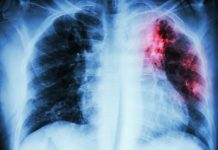Vern Putz Anderson from the National Institute for Occupational Safety and Health at the Centers for Disease Control and Prevention (CDC) details the risk factors, symptoms and prevention of musculoskeletal disorders in the workplace…
Aches and pains are a part of life, but musculoskeletal disorders, or MSDs, such as back problems, carpal tunnel syndrome, or tendinitis become a problem when you
can no longer recover – and in some cases, no longer work. Workers who perform the same tasks repeatedly, work in awkward positions such as stooping or bending, or exert a lot of effort to complete a task, risk injuring muscles, tendons, nerves, joints, ligaments and other soft tissues. These injuries can cause pain and may ultimately impair your ability to work.
MSDs can take a toll on workers, employers, and society. In the United States for example, MSDs accounted for approximately 30% of occupational injuries that resulted in time away from work in 20131. These injuries also represent one of the top 3 conditions accounting for the greatest number of “years lived with disability” in the U.S. working population2.
Overexertion, which occurs when you do more lifting, pulling, pushing, or throwing than your body can handle, is one of the most frequent, costly, and disabling workplace injuries. Overexertion accounts for 25% of annual workplace injuries at an annual cost of $15.1bn3. In a work setting, overexertion can happen when employees don’t have control over the demands of their job – their work may be paced by machines or customers. Additionally, as workers age, the demands of their job might remain constant, yet their endurance has decreased, and the time they need to recover has increased. In these situations the physical demands of the job exceed the worker’s capabilities and can lead to discomfort, chronic pain, or disabling injuries.
Most workers recognise the signs and symptoms of overexertion within a few days – if not immediately. Common symptoms include pain, swelling, and restricted movement. It’s important not to ignore the first signs of work-related discomfort because it can lead to a more severe, chronic condition. At the onset of symptoms, workers should alert their employer to identify and assess problems with their job before it leads to an MSD4. This early warning can indicate the worker is not well-matched to the demands of the job. Early recognition and intervention remain the keys for preventing long-term injuries and costly workers’ compensation payments. When faced with prospective hazards, the ultimate goal is to design the work area to eliminate the hazard by changing the workplace, job task, and/or tools. Although MSDs affect workers across a range of industries and occupations, an example of the positive impact of this practice comes from the healthcare industry. According to the US Bureau of Labor Statistics, more than half of all MSDs that occur in the healthcare industry involved patient handling and accounted for 14% of all MSDs that resulted in at least one lost day from work in 20105. The single greatest risk factor for overexertion injuries in healthcare workers is the manual lifting, moving, and repositioning of patients – known as manual patient handling.
Evidence-based research has shown that replacing manual patient handling with safer methods guided by the principles of ergonomics, called safe-patient handling, can significantly reduce overexertion injuries to caregivers. The goal of ergonomics is to reduce stress and eliminate injuries and disorders associated with the overuse of muscles, bad posture, and repeated tasks. In the case of patient handling, it involves the use of mechanical equipment and safety procedures to lift and move patients so that healthcare workers can avoid using manual exertions and reduce their risk of injury.
Prior to the introduction of ergonomic principles, employers relied on their workers to meet production and output demands. In short: workers serviced the machines, rather than machines fitting the needs of workers. Today, ergonomic solutions using mechanical equipment that enhances a worker’s ability to do a job safely, also called engineering controls, have been developed for a wide variety of occupations and workers including nurses, carpenters, miners, manufacturers, and transportation and retail workers6-9.
Effective ergonomic solutions in the workplace, like safe patient handling, can lower the incidence and severity of musculoskeletal injuries, which in turn can improve productivity and lower an employer’s costs. The National Institute for Occupational Safety and Health, or NIOSH, which is part of the US Centers for Disease Control and Prevention, is a leading source on workplace-related musculoskeletal disorders, their causes, as well as prevention and controls. For more information, visit www.cdc.gov/niosh/topics/ergonomics.
The findings and conclusions in this report are those of the author(s) and do not necessarily represent the views of the National Institute for Occupational Safety and Health.
1 Bureau of Labor Statistics. Nonfatal occupational injuries and illnesses requiring days away from work 2013. Washington, DC: Department of Labor; 2014:31.
2 Murray CJ, Abraham J, Ali MK, et al. The state of US health, 1990-2010: burden of diseases, injuries, and risk factors. JAMA. 2013;310:591-606.
3 Liberty Mutual Research Institute for Safety. The 2012 Liberty Mutual workplace safety index. From Research to Reality. Hopkinton, MA; 2012:16.
4 Bernard B, ed. Musculoskeletal disorders and workplace factors: a critical review of epidemiology . Washington, DC: NIOSH; 1997.
5 Bureau of Labor Statistics. Frequently asked questions [October 17, 2014]. U.S. Department of Labor. Retrieved from: http://www.bls.gov/iif/oshfaq1.htm .
6 Collins JW, Nelson A, Sublet V. Safe lifting and movement of nursing home residents. 2006:117. Retrieved from: http://www.cdc.gov/niosh/docs/2006-117/pdfs/2006-117.pdf .
7 Hudock SD, Wurzelbacher SJ, Reed LD, Hales TR, Siegfried KV. A precursor to ergonomics best practices for the shipyard industries. Journal of Ship Production. 2001;17:145-150.
8 Albers J, Estill CF. Simple solutions; ergonomics for construction workers. 2007:1864–1871. Retrieved from: http://www.cdc.gov/niosh/docs/2007-122.
9 Anderson Putz A (Vern). Ergonomic solutions for retailers: prevention of material handling injuries in the grocery sector. Department of Health and Human Services, Centers for Disease Control and Prevention, National Institute for Occupational Safety and Health, Cincinnati, Ohio: NIOSH 2014:24. Retrieved from: http://www.cdc.gov/niosh/docs/2015-100.
Vern Putz Anderson, PhD, CPE
National Institute for Occupational Safety and Health
Centers for Disease Control and Prevention (CDC)











